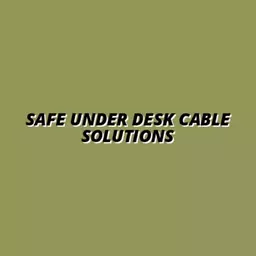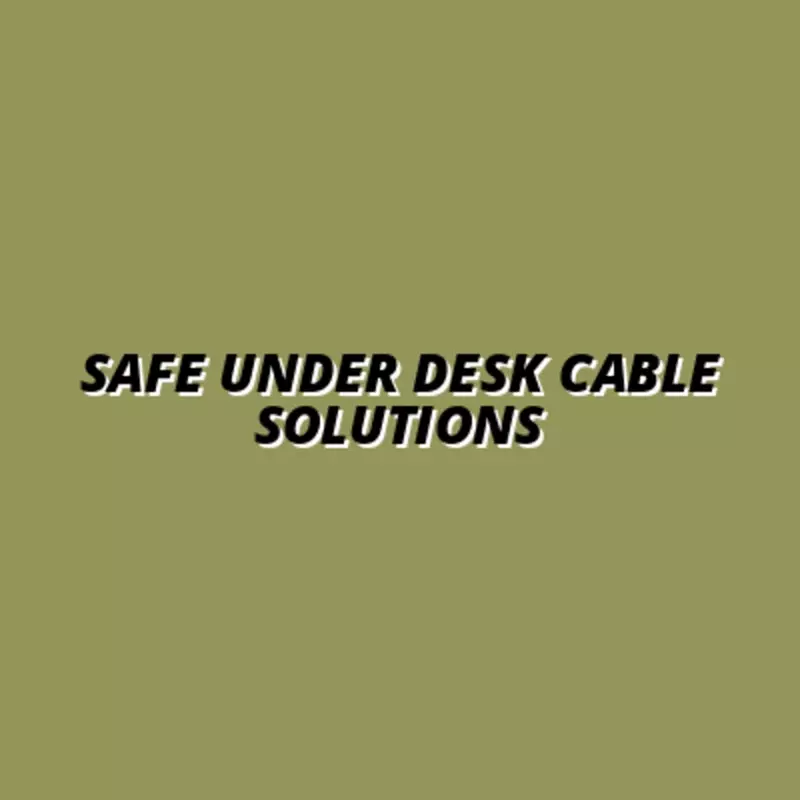
Plastic or Metal Trays: Safety Tips
Choosing the right tray for your workspace can significantly impact safety and hygiene. With various materials and industry standards to consider, understanding these factors can lead to better decisions that enhance both functionality and compliance.
What You Will Learn
- The importance of selecting trays made from safe, hygienic materials to prevent health risks.
- Different materials used in trays, such as stainless steel, plastic, and bamboo, each with unique safety and hygiene properties.
- How tray selection varies across industries like healthcare and food service, highlighting the need for compliance with specific safety standards.
- Key compliance guidelines, including FDA regulations and OSHA requirements, that ensure safety in tray usage.
- The significance of balancing durability, safety, and cost when choosing trays for your specific needs.
- Best practices for maintaining and inspecting trays to prolong their life and ensure workplace safety.
Key Considerations for Tray Selection
Understanding the different materials and their applications in various industries is essential for making informed decisions.
Material Properties
- Stainless Steel: Antibacterial, easy to clean
- Plastic: Lightweight, affordable
- Bamboo: Eco-friendly, less durable
Industry Applications
- Healthcare: Focus on sterilization
- Food Service: Emphasis on hygiene
- Manufacturing: Strength requirements
Safety Standards
- FDA Regulations: For food service trays
- ISO Standards: Material guidelines
- OSHA Requirements: Safe handling protocols
Considerations for Durable Selection
- Usage Evaluation: Environment and frequency
- Material Choice: Lightweight vs. durable
- Cost Analysis: Initial vs. long-term value
Understanding the Importance of Safety in Tray Selection
When it comes to selecting trays, safety is a key factor that shouldn’t be overlooked. At Under-Desk Tray Hub, we understand the importance of finding the right tray for your needs, especially in environments where hygiene and safety are paramount. Choosing trays made from the right materials can significantly reduce risks, ensuring your workspace remains organized and safe.
Safety not only refers to physical hazards but also to hygiene concerns that can arise from improper materials. For example, using materials that are easy to clean and resistant to bacteria can help maintain a healthy workspace. Understanding how different materials perform in terms of safety and hygiene is essential to making informed decisions. You can also check out organize cables for safer workspaces and how this can improve your workspace.
Exploring the Role of Material in Safety and Hygiene
The choice of material plays a critical role in the safety and hygiene of trays. Different materials have unique properties that affect their performance in various settings. Here are some materials commonly used in tray selection:
- Stainless Steel: Known for its antibacterial properties and ease of cleaning.
- Plastic: Lightweight and affordable but may not withstand high temperatures.
- Bamboo: Eco-friendly and naturally resistant to bacteria yet can be less durable.
Each material has its own advantages and disadvantages, making it crucial to assess what works best for your specific environment. For instance, stainless steel trays are ideal for food service due to their durability and hygienic properties. On the other hand, plastic trays may be more suitable for casual settings where extensive cleaning is less critical.
Frequently Asked Questions About Tray Safety
- What are the best cleaning practices for maintaining hygiene? Cleaning practices depend on the tray material. Stainless steel benefits from regular washing with antibacterial soap, while plastic may require specific sanitizers. Always follow manufacturer guidelines.
- How often should trays be inspected for damage? Trays should be inspected daily in high-use environments and weekly in low-use settings. Look for cracks, chips, and signs of wear that could compromise safety.
- What type of tray is most suitable for my industry? The best tray depends on your industry's specific needs. Healthcare requires sterilization-compatible trays, food service needs food-grade materials, and manufacturing may need heavy-duty options.
Why the Right Tray Matters in Various Industries
The right tray selection varies by industry, and understanding these differences can prevent costly mistakes. In healthcare, for example, trays must meet stringent hygiene standards to avoid contamination. Similarly, in food service, safety regulations dictate the materials used to ensure food safety. Here are some industries where tray selection is particularly crucial:
- Healthcare: Focus on sterilization and durability.
- Food Service: Emphasis on hygiene and temperature tolerance.
- Manufacturing: Need for strength and load-bearing capacity.
By prioritizing the right material for your industry, you can ensure compliance with regulations and promote safety. At Under-Desk Tray Hub, we are committed to helping you find the best solutions tailored to your industry’s unique needs! Also, consider using cable management to help with office organization.
Safety Standards and Compliance Guidelines for Tray Selection
Compliance with safety standards is a must when choosing trays for any application. Understanding the guidelines can help protect your workspace and prevent accidents. Here are some key compliance aspects to consider:
- FDA Regulations: For food service trays, compliance with FDA regulations is essential for safety.
- ISO Standards: These provide guidelines for materials and manufacturing processes.
- OSHA Requirements: Guidelines to ensure safe handling and use of trays in workplaces.
Being aware of these standards not only helps in selecting the right tray but also reduces risks associated with improper use. Safety should always be a priority, and adhering to guidelines can lead to a more organized and efficient workspace.
💡 Want to master under-desk cable trays? Start with our foundational guide to all things cable management. 👉 Read the Cable Management 101 Guide
Pro Tip
When selecting trays for your workspace, consider investing in materials that not only meet safety standards but also enhance your operational efficiency. For instance, opting for trays with rounded edges can minimize injuries in high-traffic areas, while trays with handles can improve ergonomics during transportation. Small design features can make a significant impact on safety and usability!
Summarizing Key Points on Tray Safety and Maintenance
As we wrap up our discussion on tray safety, it’s essential to remember the three cornerstones of effective tray selection: durability, safety, and cost. Each of these factors plays a significant role in ensuring that you choose the right tray for your specific needs. Whether you’re in a bustling kitchen or a medical facility, prioritizing these elements can enhance the efficiency and safety of your workspace.
When it comes to durability, consider how the materials, whether plastic or metal, will withstand everyday use. Safety is paramount, not just for compliance, but to protect those who rely on these trays for their daily operations. Lastly, keeping an eye on cost is crucial! You want to make an investment that pays off in the long run. By carefully weighing these factors, you can make informed decisions that positively impact your environment.
Balancing Durability, Safety, and Cost in Your Selection
Finding the right balance between durability, safety, and cost may seem like a daunting task, but it doesn't have to be! Here are some key considerations to help you along the way:
- Evaluate Your Usage: Consider the environment and frequency of use to determine the necessary durability.
- Safety Standards: Always ensure the trays meet relevant safety regulations for your industry.
- Cost Analysis: Compare initial costs with long-term durability to assess the best value.
- Material Choice: Decide between plastic for lightweight and cost-effective options or metal for long-lasting strength.
By keeping these factors in mind, you can confidently choose trays that not only fit your budget but also stand the test of time, ensuring safety and efficiency. Don't forget to review choosing safe cable tray materials to ensure the safety of your cable trays.
Final Thoughts on Maintaining Safety with Plastic vs. Metal Trays
In the end, whether you opt for plastic or metal trays, ongoing maintenance is key to ensuring their safety and longevity. Regular checks for wear and tear can prevent accidents and ensure your trays remain functional. Additionally, consider the cleaning protocols we discussed earlier to maintain hygiene standards. Your workspace deserves nothing less!
Remember, at Under-Desk Tray Hub, we are here to help you navigate these choices. With our expertise in under-desk organization and cable management, you can trust that we’ll guide you in selecting the best trays suited for your needs.
Engaging with the Community: Your Questions Answered
Engagement with our community is important to us! We love hearing your questions about tray safety and maintenance. The more we share insights, the more we can all learn. Don't hesitate to reach out with your thoughts and experiences.
Common Questions About Tray Safety and Maintenance
Here are some frequently asked questions that can help guide your decisions:
- What are the best cleaning practices for maintaining hygiene?
- How often should trays be inspected for damage?
- What type of tray is most suitable for my industry?
These questions can pave the way for informed choices, ensuring you maintain safe and functional workspaces.
Encouraging User Experiences and Insights
Your experiences are invaluable! Sharing how you've implemented safety measures and tray selections can inspire others in the community. Have you discovered a cleaning method that works wonders? Or perhaps a specific material that has stood the test of time? We want to hear all about it!
Call to Action for Informed Choices
As we conclude this exploration of tray safety, I encourage you to evaluate your tray options thoughtfully. Take the time to consider the factors we discussed and how they apply to your unique situation. The right choice can make a big difference!
Encouraging Readers to Evaluate Their Tray Options Thoughtfully
Your workspace deserves the best, and that starts with the right trays. Don’t rush your decision—reflect on your needs and how each option aligns with your operational goals. Remember, safety and functionality go hand-in-hand!
Inviting Feedback and Further Discussion on Tray Safety Practices
We value your feedback! Please share your thoughts and experiences on tray safety practices. Engaging with our community not only fosters a wealth of knowledge but also promotes a safer, more organized workspace for everyone. Let's keep the conversation going!
Recap of Key Points
Here is a quick recap of the important points discussed in the article:
- Material Selection: Choose trays made from materials that ensure safety and ease of cleaning, such as stainless steel for its antibacterial properties.
- Industry-Specific Needs: Understand the unique requirements of your industry, such as hygiene standards in healthcare and temperature tolerances in food service.
- Compliance Awareness: Adhere to safety standards and regulations (e.g., FDA, ISO, OSHA) to minimize risks and ensure safe operations.
- Durability vs. Cost: Balance the durability of materials with cost-efficiency to make informed purchasing decisions.
- Regular Maintenance: Conduct routine checks for wear and tear and follow proper cleaning protocols to maintain hygiene and safety.
Consider how desk lamp cable organization can improve the overall workspace.
Additionally, explore organizing cables on your desk for a tidier workspace.




